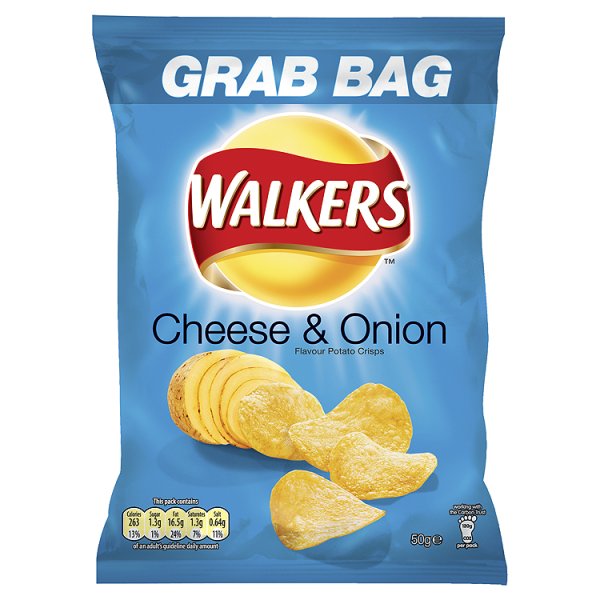One of my biggest healthy eating problems, especially as a frequent traveller, is with portion sizes. It’s not how much food you put on your plate, but how much other people are putting on there for you.
I’m a firm believer in moderation in all things. I think the quickest way to give up on any “diet” is to call it a diet and refuse to eat anything that tastes nice. You only live once and if you really want a packet of crisps then you should damn well have one, not replace it with carrot sticks. The problem is that you can’t just buy a packet of crisps anymore. No, you have to buy a “Grab Bag”.
I remember when a packet of crisps was 25g, in fact, if you buy a multipack, it still is. For Walkers Cheese & Onion crisps (my favourites!) that means there are 133 calories in a packet of crisps. If you buy a standard size packet off the shelf you’ll find that it weighs 32.5g and contains 173 calories. Most commonly, however, you’ll find the 50g grab bags, and they clock up a whole 263 calories in a bag of crisps. It’s no wonder we’re fat when you think a simple bag of crisps is adding 130 calories to your daily diet, and most people don’t even realise that the pack size is any different. It’s just a bag of crisps. I was even reduced to fury by a bag of Hula Hoops the other day that advertised the calorie count on the front of the pack, after eating them I looked at the back and noticed that the calorie count advertised was for a serving size of HALF A PACKET. Who the hell eats HALF a packet of crisps as a portion?
A McDonalds Cheeseburger contains 295 calories, and really is probably all you need for lunch. If you end up tempted by, for instance, the M burger with bacon, then you could be nearly doubling that to 580 calories.
Researchers at the university of North Carolina did some research in the changing of portion sizes between 1977 and 1996 and they found that, amongst others, salty snacks increased by 93 calories per portion, soft drinks by 49 calories and hamburgers by 97 calories. That’s just to 1996, that’s over 15 years old now and I’ve certainly noticed an increase in my adult life.
Other research at Penn State found that people rated their satisfaction levels as the same regardless of the portion sizes they were served. When we eat smaller portions we’re not left hungry or unsatisfied, but most people will eat all the food that’s in front of them.
So what’s the answer?
Unfortunately the only answer is to be aware of the sizes of the portions on the packets you pick up. Don’t assume that all packets are equal and make sure you look at the actual gram size, the serving size and the calorie counts before you eat them.
Don’t be afraid to order the childrens portions. Sadly most restaurants still have childrens menus that are all turkey twizzlers and chips, rather than smaller portions of the nice food, but if you’re lucky enough to find a good one then make the most of it. Another trick I use is to order 2 starters, instead of a starter and a main course, it’s normally plenty to eat, and often cuts down on the amount of starchy food like chips or potatoes in your meal as well.
The Bupa Website has an excellent guide to portion size and how much we should eat. When you weigh out and cook 50g of pasta at home, familiarise yourself with how that looks on a plate, so when you’re dished up 100g of pasta in a restaurant at least you’ll know it’s a huge portion. Eat it or not, the choice is still yours, but if you have a bit of willpower you can leave the excess.
I might also ask the restaurant to refund my money for the ridiculous amount of food they have served, if only I had the guts.
AQ8PM47FVXW8
